Grow lights are quickly becoming an important part of indoor gardening. They can help you to grow plants that would never grow in your home before. However, you need to understand how to use them to get the best results.
From incandescent lights to full spectrum LED grow lights, you will need to know how they work and where to place them before pointing them at your houseplants.
We’re going to cover everything you’ll need to know about how to use grow lights for indoor plants.
How to use grow lights for indoor plants
There are a handful of ways to set up grow lights, but the most common way is by hanging grow light fixtures above plants.
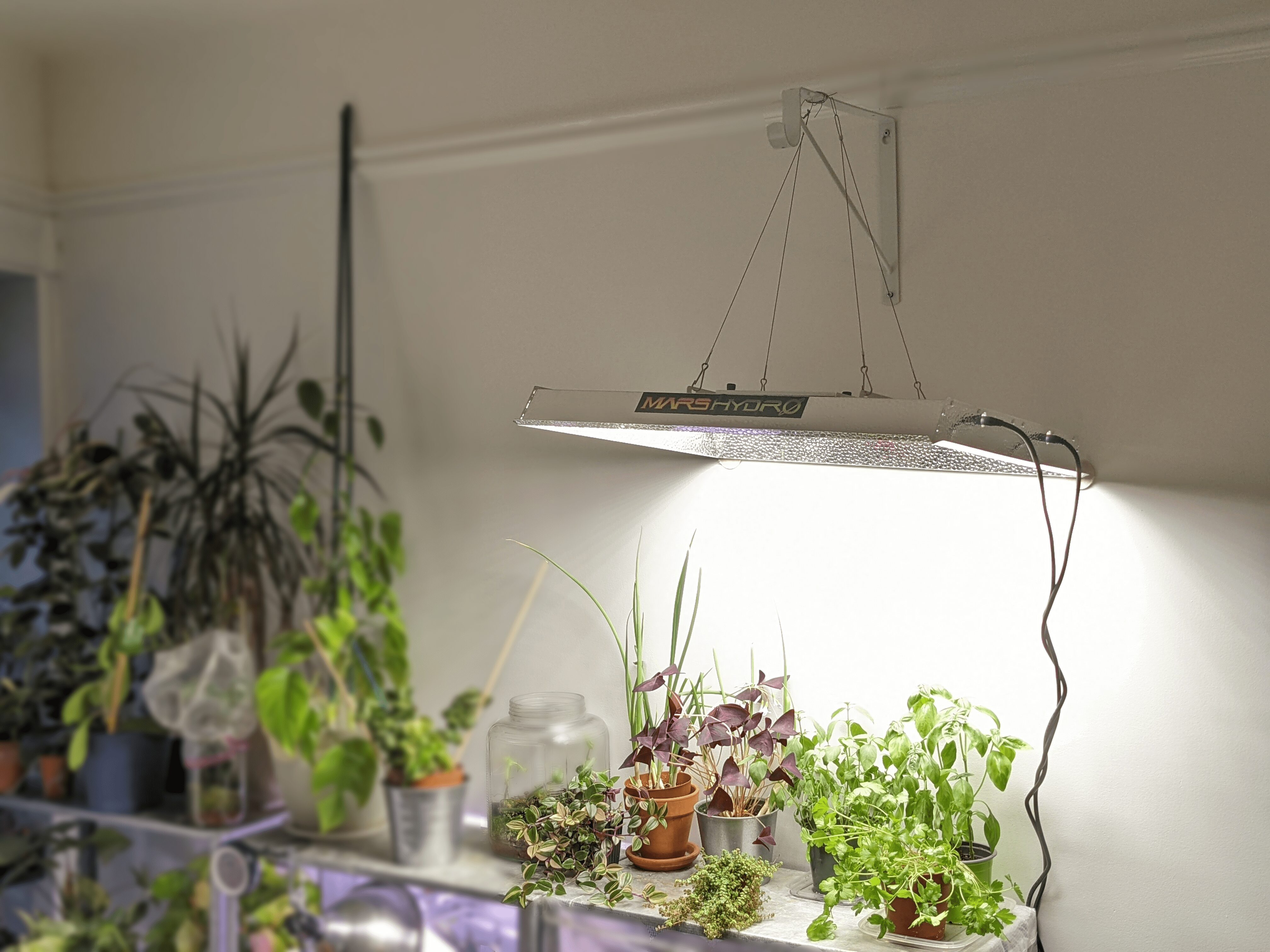
A dedicated grow light fixture, like Fluorescent and LED lights, are designed to house specialized bulbs. Although these dedicated grow lights are convenient, some of them don’t actually emit a full light spectrum, so be careful when choosing a grow light. They offer great coverage and often have their own in-built cooling system, making them perfect for large indoor gardens or large houseplants.
There are also specialized grow light bulbs that can be used in traditional light fittings. This allows you to use full spectrum bulbs or fluorescent bulbs in lamps or light fixtures you already own. This type of grow light is great for small indoor gardens or plants that don’t require large quantities of light.
Different grow lights and light bulbs available
Here are the most common types of grow lights and how they work:
- Incandescent Bulbs: These are the cheapest option. They’re the same kind of bulb fitting used in your home already, meaning you can screw them into your existing fixtures and lamps. However, to work for plants they need to be higher in their watts rating. The higher the rating, the hotter the bulbs get, meaning that they need to be placed further away from your plants. Best used in conjunction with natural light.
- Fluorescent Grow Lights: Fluorescent lights are a popular option for home growers. You’ll either need to buy one for red light and one for blue light to offer the full spectrum for your plants, or look for a fluorescent light fixture that offers both.
- High Intensity Discharge (HID) Lights: Metal Halide (MH) and High Pressure Sodium (HPS) lights are used by commercial growers. MH lights produce more blue light, which is great for vegetative growth. HPS lights produce more orange and red light, which promotes flowering. These lights need to be used in conjunction in order to achieve full spectrum light. They’re expensive both to purchase and to run.
- LED Lights: Light emitting diodes, better known as LEDs, are the best option for small indoor gardens. They create little heat, and are able to be programmed to produce the correct color temperature of sunlight, while also producing red and blue light spectrums. LED bulbs are pricey, but cost virtually nothing to run. They’re worth the investment. (Here are the best LED lights that we recommend.)
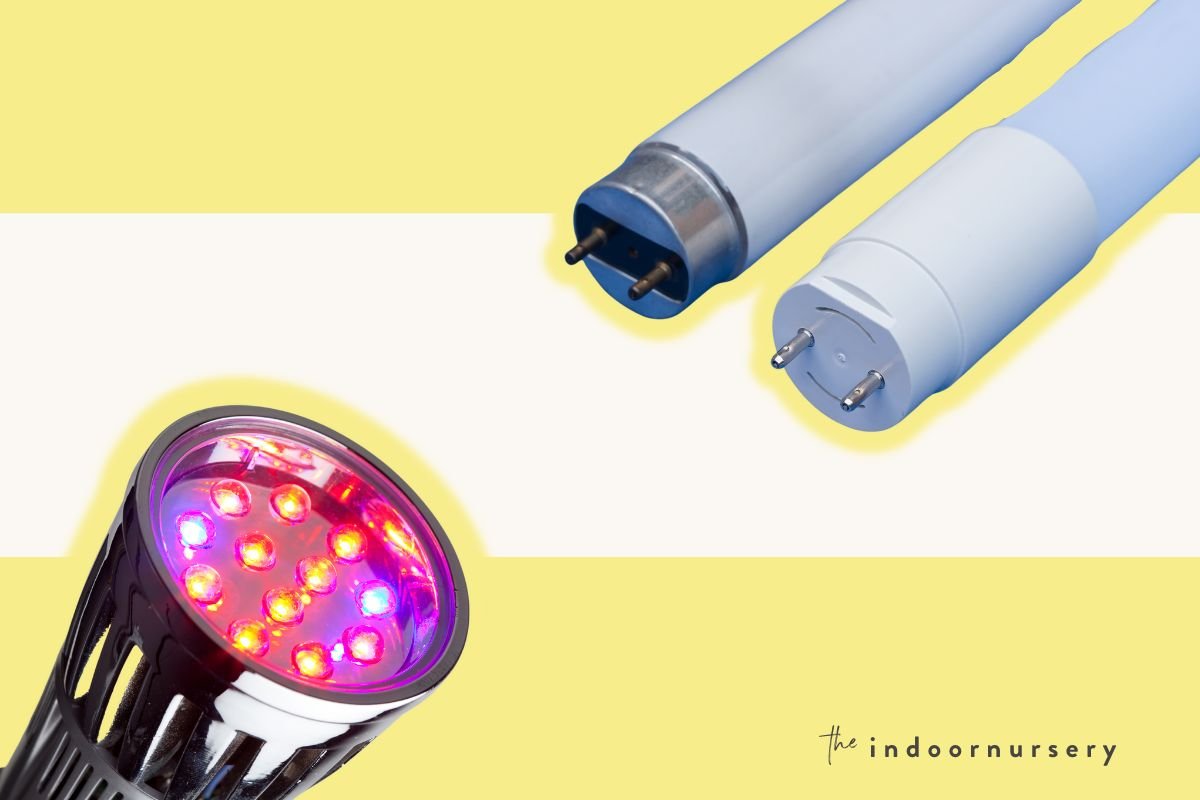
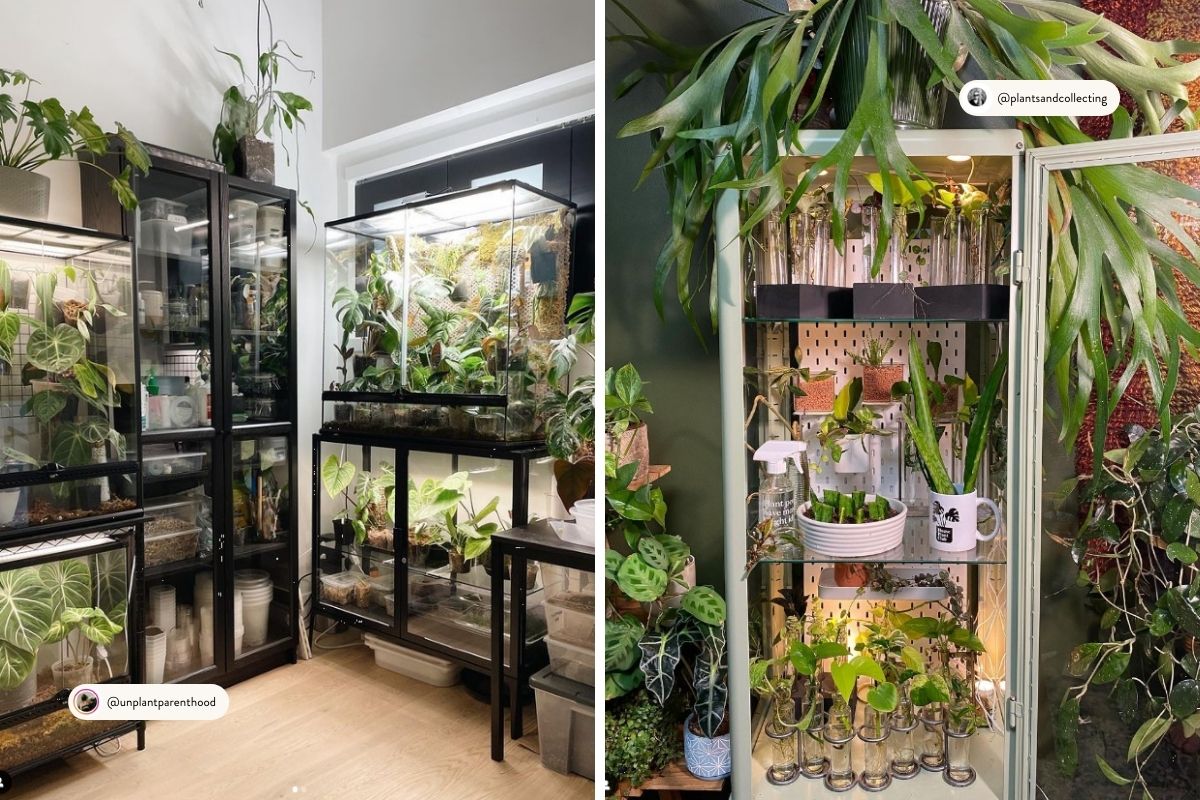
How long to keep grow lights on plants
Knowing how long to keep your grow lights on your plants depends on a few factors. We’ve broken them down below to help you set up your best grow light routine for your plants.
When should I turn on my grow lights?
When a plant is a seedling, you can give it light 24 hours around the clock to encourage rapid growth. When they hit the adolescent stage, they’re better off with a 12:12 routine, with 12 hours of light and 12 hours of darkness. This replicates the natural light levels they’d receive during springtime for a standard day cycle. When they hit maturity, or when a grower wants to stimulate reproductive growth, an 18:6 routine can be implemented. This amount of light emulates what the plant would naturally receive during later summer months. Consider getting a timer for your lights to make it easier on yourself.
How many lights should I have?
How many grow lights you need is entirely dependent upon the number of plants that you have. You’re going to have to take a few things into consideration when you’re determining how many lights you’ll need. You need to know your:
- Plant Coverage: How much light each plant will receive from a light
- Light Intensity: The amount of light needed for optimal growth, measured in Lumens for HID lights, and PAR for LED grow lights
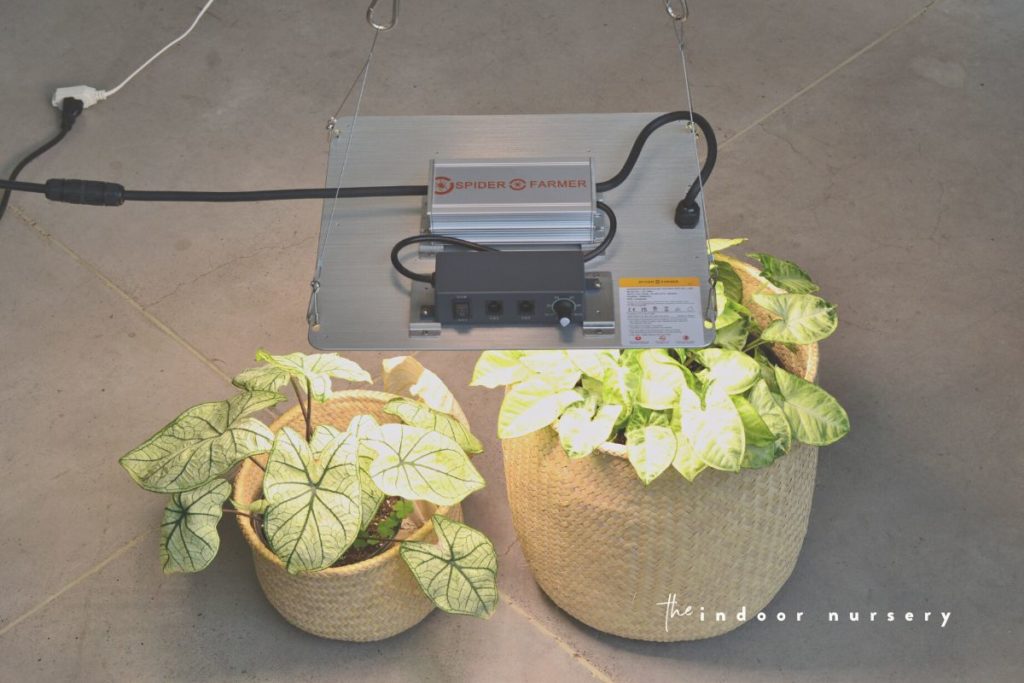
Follow the steps below to calculate exactly how many lights you’ll need for your plants.
- Research Your Plants Lumen or PAR Needs: Some plants need more Lumens or a higher PAR value to grow well, while others need less. While you could always guess, this won’t necessarily be the best thing for your plants. For example, leafy greens like PAR value at about 200, while flowering and fruiting plans prefer a PAR value anywhere from 400 to 500. You can easily measure PAR with a PAR meter to be absolutely sure what your plants are receiving.
- Measure Your Required Plant Coverage: Think about the size of your plants, both in terms of current size and expected size. Measure the ideal space fully grown plants will need, and how tall they’ll be. Then, determine the amount of square footage you’ll need to grow your plants indoors.
- Choose a Grow Light Based on Intensity and Coverage: Grow lights provide measurements of their light intensity, as well as the square footage they can cover from a certain height. Generally speaking, 32-50 watts of artificial light per square foot is a good starting place.
How far away from the plants should the grow lights be?
The distance between your plants and the light really depends on the type of grow light that you’re using.
- HID Grow Lights: HID grow lights, regardless of intensity, need to be at least 12″ away from the tops of your plants at all times. This provides adequate light without risking a burn. The stronger the light, the further away the light should be. A 400 watt light is fine at 12″, but a 1000 watt light may need to be further, at about 15″. They should never be further away than 30″, though.
- LED Grow Lights: While LED grows lights avoid the issues seen with heat, LED lights can cause bleaching. This can prevent a plant from being able to photosynthesize. LED lights to need to be kept at least 16″ from plants. The stronger the light, the further away, of course.
- Fluorescent Grow Lights: To remain effective, fluorescent grow bulbs need to be kept much closer than the others on the list. They need to be kept anywhere from 6″ to 12″ from the tops of your plants. Anything further and they are too far.
What color should my grow lights be?
The answer to this question varies greatly from plant to plant. There is an easy answer, but there is a very complex explanation to it. To understand it fully, read our guide about the full spectrum of lights for plants.
In the meantime, here’s the quick answer. Grow lights should be any one of the following colors, depending on the type of growth you want to promote, and the type of plant you’ve got:
- Red light should be used for strengthening stem growth, or during the flowering stage of the plant’s life cycle.
- Blue or violet light should be used for promoting vegetative growth, or for plants like leafy greens.
How to choose the right grow lights for your house plants
Plants use three different types of light to grow. The visible light spectrum is made up of the light that we can see with our eyes. Plants also use ultraviolet light, the UV rays that are produced by the sun, as well as infrared radiation.
Visible light ranges in measurements from 380nm to 700nm. As people, we see 400nm as the color violet, and 700nm as the color red. This is called the photosynthetically active radiation range. Plants absorb violet and blue light waves ranging from 400nm to 490nm for foliage growth. They also absorb red light between 580nm and 700nm for flowering purposes.
Only small amounts of green light are absorbed by plants. Instead, it is reflected back to us, giving plants their green color.
Ultraviolet light is broken up into three categories, UV-A, UV-B, and UV-C. UV-A is great for plant growth, small amounts of UV-B can help prevent fungal infections, and UV-C is harmful to plants and thankfully doesn’t reach the Earth’s surface. Anyone who owns reptiles knows the importance of this portion of the light spectrum.
Infrared radiation (IR) is another important part of plant growth that occurs naturally. It is basically the heat that light gives off and signals to your plants that it’s time to grow and reproduce. Too much, and plants stop growing and sometimes die. And too little will stunt growth and reproduction. All light sources give off heat waves, so be mindful of overheating (or underheating) your plants.
When selecting an indoor grow light, look for an option that offers both blue and red light, as well as UV-A and IR in optimal amounts. If you want more information about the way that plants use light, check out our full-spectrum light for plants guide. It breaks everything down in much more detail than we do here.
Common problems / FAQs
What’s the difference between regular LEDs and LED grow lights?
Regular LED lights aren’t going to provide the full spectrum light needed for a plant’s growth. Grow lights are used because of their specific output designed to support plant growth.
How many hours should my grow lights be on?
It really depends on the plant, but generally speaking, grow lights need to be on for 8 to 10 hours to be considered effective. Some sun loving plants need up to 16 hours of light, though!
How many grow lights do I need?
It depends on how many plants you have in your indoor garden! A good rule of thumb is 32-50 watts of artificial light per square foot.
Should I use grow lights for starting seeds indoors?
This is an excellent use of grow lights! Indoor seed starting during the colder months is a great way to get a jump on the next growing season. Growing seedlings need more light than mature plants, so give them a bit more light when you start.
Do I need to use a supplemental light?
If you’re using HID as your source of artificial lighting, then you’ll probably need to have a supplemental light. It depends on the kind of bulb you’re using. MH and HPS lights should be used in conjunction to provide the full spectrum light that plants need.
Final thoughts
When using indoor grow lights, just think of how natural sunlight works and what the plant evolved to expect from it. You can even use this knowledge to manipulate growth, like adjusting the light to encourage a bloom from your flowering plant or leaving a light source on for 24 hours to speed up seedling growth. If you’re more interested in the aesthetics of the home, then a simple incandescent light bulb in a stylish lamp (like this one) will do your indoor plants wonders (especially those in dark corners without much natural light coming in). Growing plants indoors is a lot more fun when your plants are thriving, so have fun with it!
More about lighting
- How To Use Grow Lights For Indoor Plants
- 5 Best Grow Light Strips For Indoor Plants
- Our *hands on* MARS HYDRO TSW 2000 review (with photos)
- Understanding weed light cycles: Get the most from your harvest
- Indoor plant lighting guide: where to put your plants
- How close should grow lights be to plants?
- Best grow lights for seedlings: how to sprout your seedlings safely
- Guide: full-spectrum light for plants (+grow light spectrum chart)
- 10 best LED grow lights for indoor plants
- Tags:
- grow lights

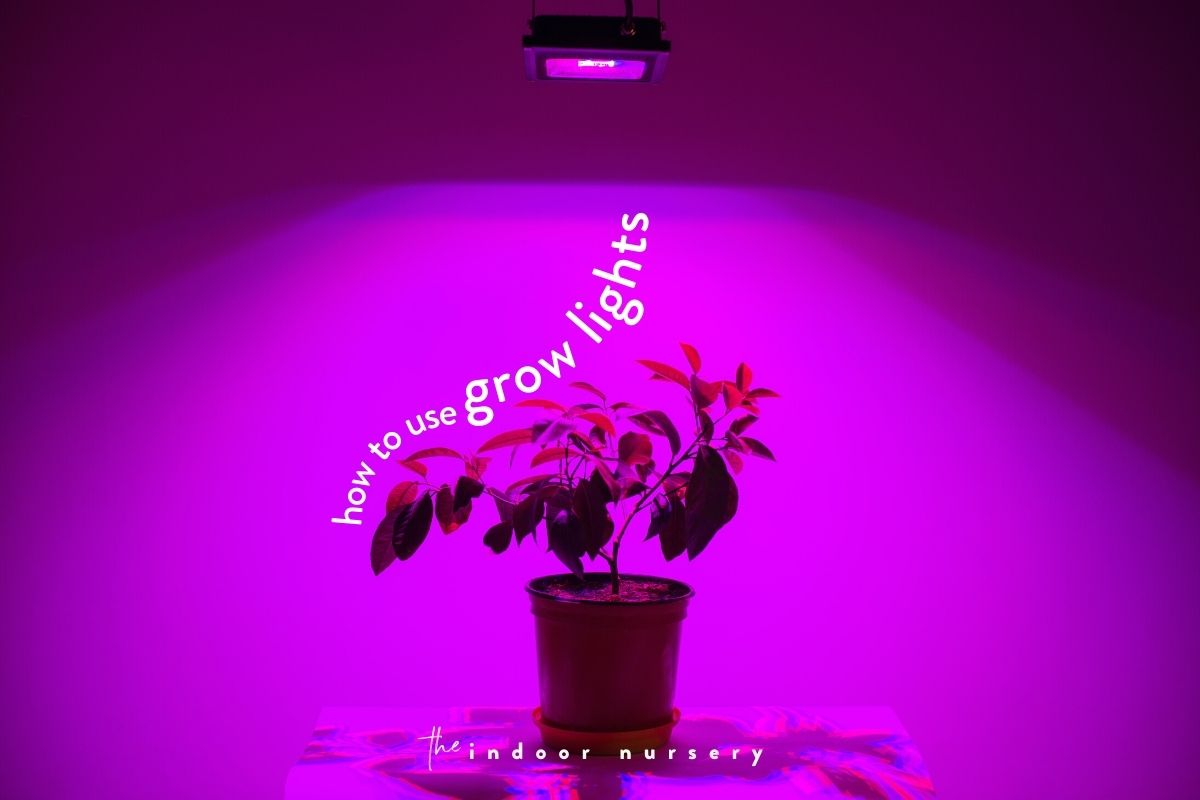

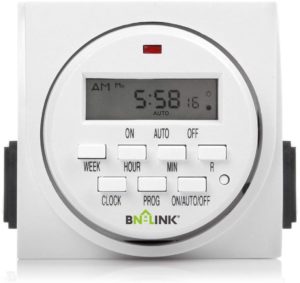
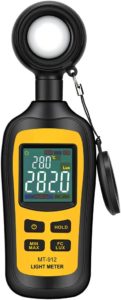
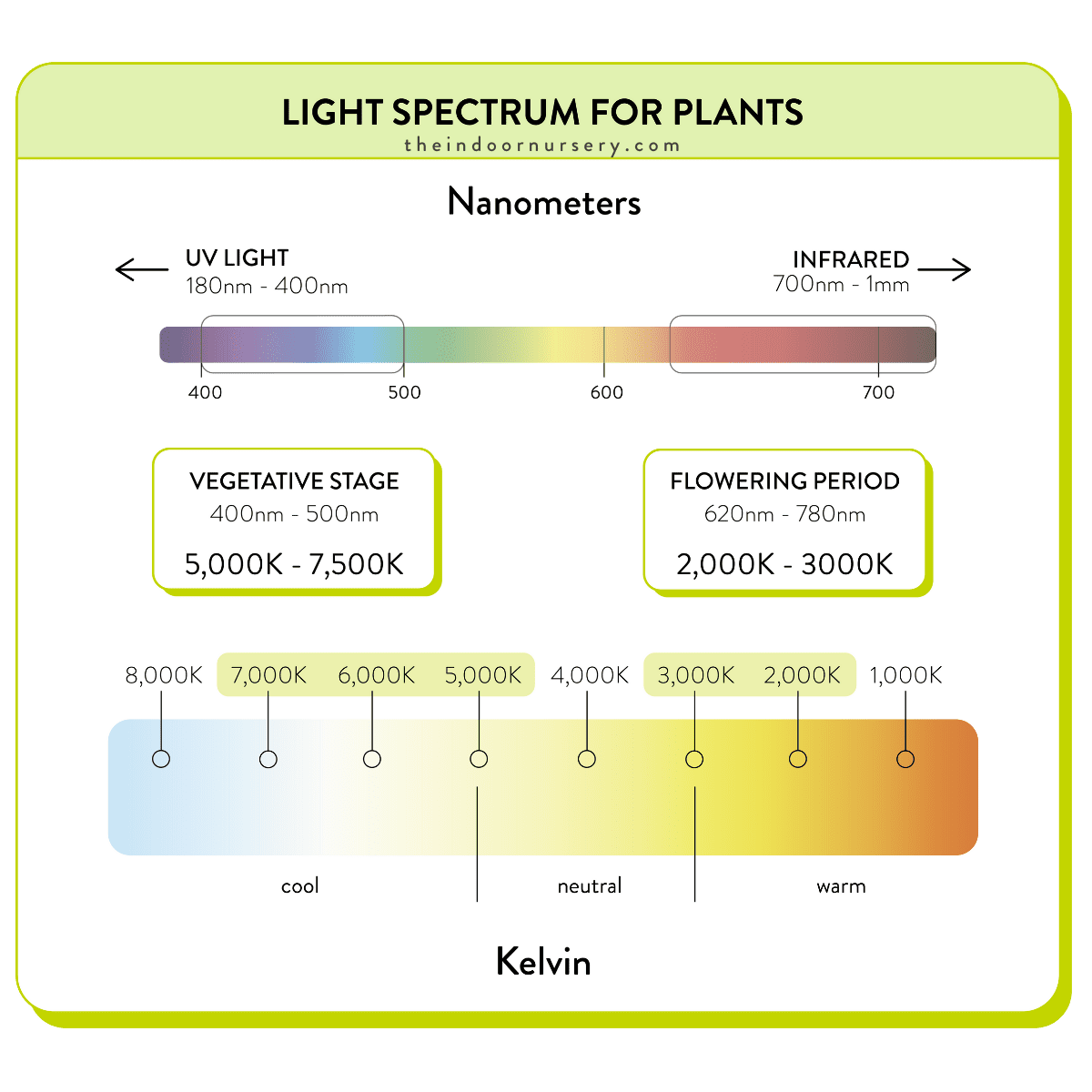
Thanks for explaining that commercial LED growing lights require little electricity to run. I’d like to start buying some because I’ve been getting very interested in taking care of potted plants. I think that it will be important to first have the right equipment for those before I take up the hobby seriously.
Hey Alice, thanks for reaching out. I’m glad you found this post helpful. Hopefully now you have a better idea of which light will be best for your indoor growing conditions. I think you’re on the right track. LEDs are a great option 😊